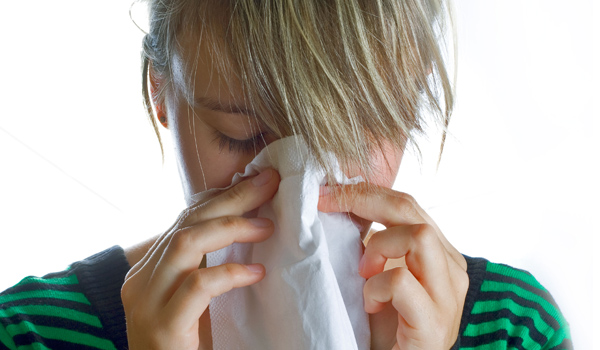Why Flu Strikes in Winter

Winter is almost here, and that means there will likely be an increase in people getting the flu. Indeed, you may have already gotten your yearly flu shot in preparation for the season. But why is flu season in winter anyway?
In the United States, flu activity typically picks up in the fall, and peaks between December and February, according to the Centers for Disease Control and Prevention. However, flu season is unpredictable, and can start as early as October, and continue as late as May.
Researchers don't know for sure why the illness is more common in winter, but they have some ideas:
Studies suggest that under cold, dry conditions, flu virus particles can remain in the air for longer periods of time and travel longer distances than they can at higher temperatures. A 2008 study found that the outer coating of the flu virus hardens at colder temperatures, which allows the microbe to travel in the air from person to person.
"The virus likes to live in cold temperatures in the air," said Dr. Len Horovitz, a pulmonary specialist at Lenox Hill Hospital in New York City. "It seems to survive better in cold temperatures." [6 Flu Vaccine Myths]
People also spend more time indoors in the winter, and congregate together for holiday gatherings, Horovitz said, which may provide more opportunities for the virus to spread to others.
Schools also start new sessions in September, which may allow for more spreading of the virus among kids, Dr. Bruce Lee, an associate professor at the University of Pittsburgh Graduate School of Public Health, told Live Science in a 2012 interview.
Sign up for the Live Science daily newsletter now
Get the world’s most fascinating discoveries delivered straight to your inbox.
The best way to protect yourself from the flu is to get an annual flu shot, the CDC said. The agency recommends a flu shot for everyone ages 6 months and older.
Follow Rachael Rettner @RachaelRettner. Follow Live Science @livescience, Facebook & Google+. Original article on Live Science.

Rachael is a Live Science contributor, and was a former channel editor and senior writer for Live Science between 2010 and 2022. She has a master's degree in journalism from New York University's Science, Health and Environmental Reporting Program. She also holds a B.S. in molecular biology and an M.S. in biology from the University of California, San Diego. Her work has appeared in Scienceline, The Washington Post and Scientific American.









